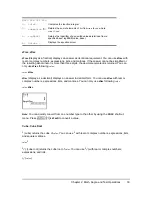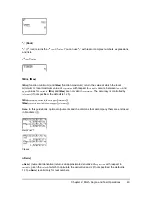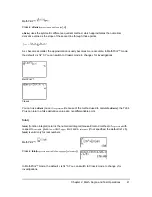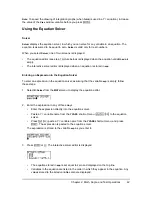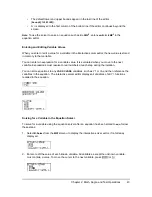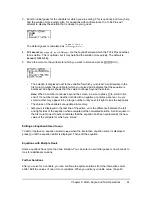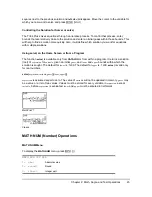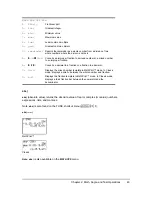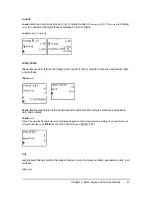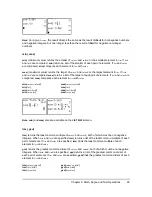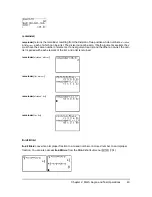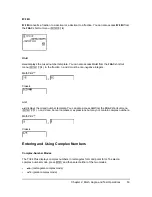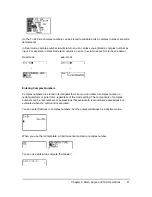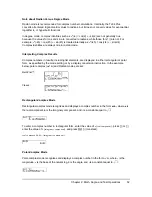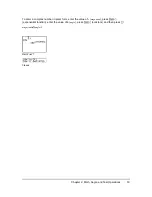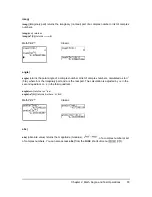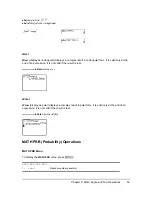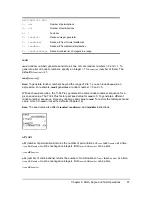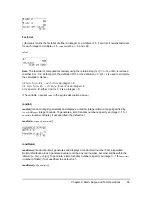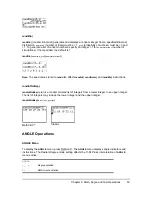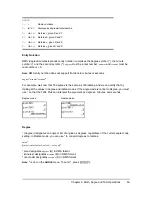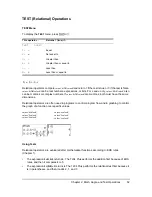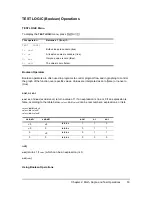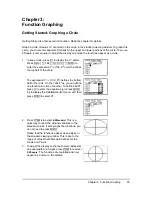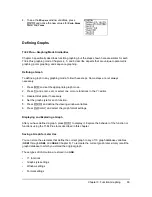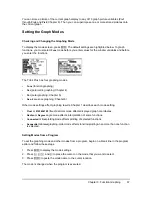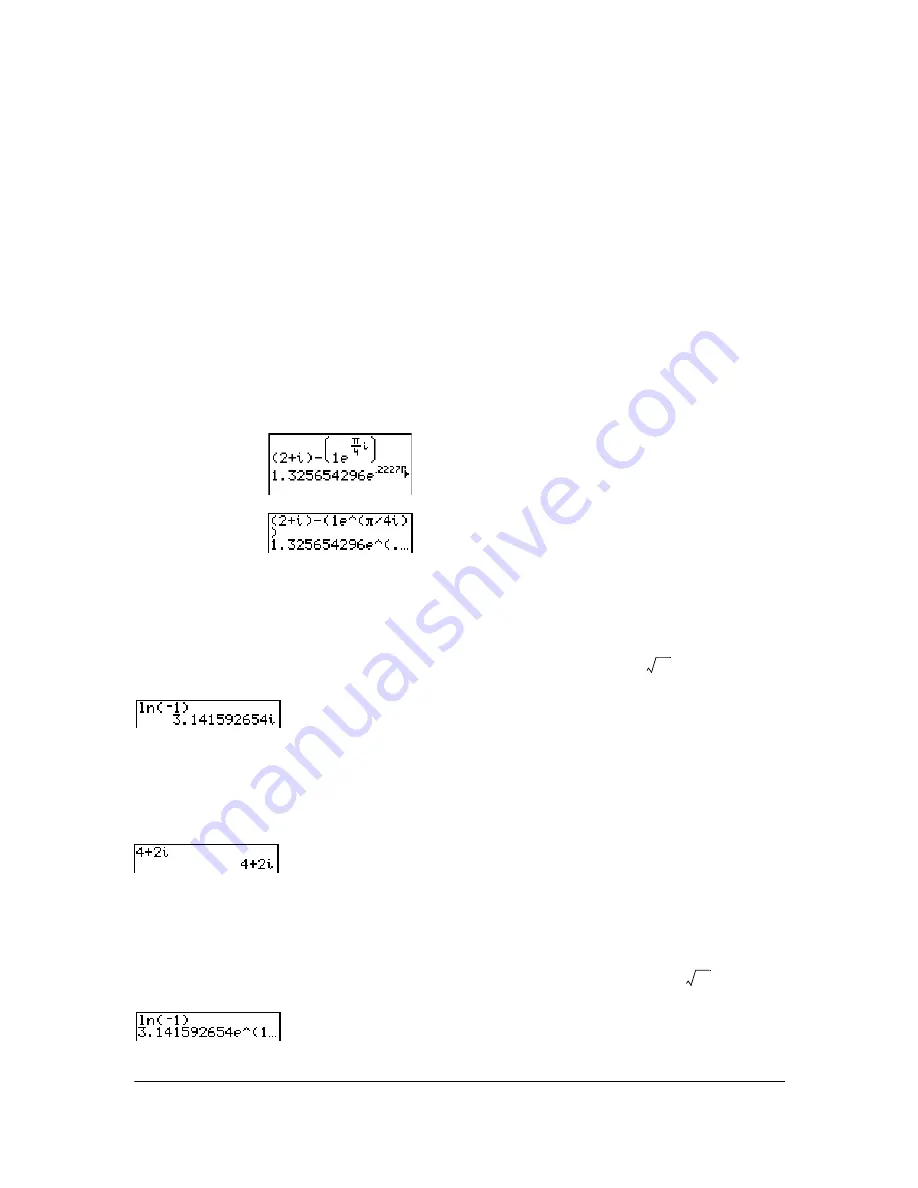
Chapter 2: Math, Angle, and Test Operations
52
Note about Radian Versus Degree Mode
Radian mode is recommended for complex number calculations. Internally, the TI-84 Plus
converts all entered trigonometric values to radians, but it does not convert values for exponential,
logarithmic, or hyperbolic functions.
In degree mode, complex identities such as
e
^(
i
q
) = cos(
q
) +
i
sin(
q
) are not generally true
because the values for cos and sin are converted to radians, while those for e^() are not. For
example,
e
^(
i
45) = cos(45) +
i
sin(45) is treated internally as
e
^(
i
45) = cos(
p
/4) +
i
sin(
p
/4).
Complex identities are always true in radian mode.
Interpreting Complex Results
Complex numbers in results, including list elements, are displayed in either rectangular or polar
form, as specified by the mode setting or by a display conversion instruction. In the example
below, polar-complex (
re^
q
i
) and Radian modes are set.
Rectangular-Complex Mode
Rectangular-complex mode recognizes and displays a complex number in the form
a+b
i
, where
a
is
the real component,
b
is the imaginary component, and
i
is a constant equal to
.
To enter a complex number in rectangular form, enter the value of
a
(
real component
), press
Ã
or
¹
,
enter the value of
b
(
imaginary component
), and press
y V
(constant).
real component
(
+
or
N
)
imaginary component i
Polar-Complex Mode
Polar-complex mode recognizes and displays a complex number in the form
re^
q
i
, where
r
is the
magnitude,
e
is the base of the natural log,
q
is the angle, and
i
is a constant equal to
.
MathPrint™:
Classic:
1
–
1
–


